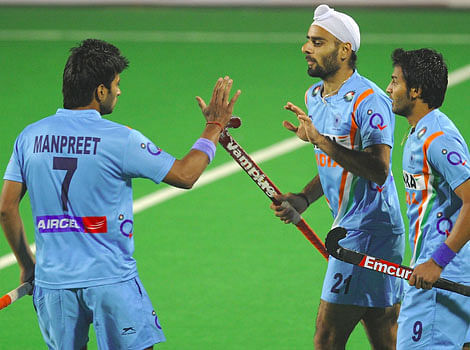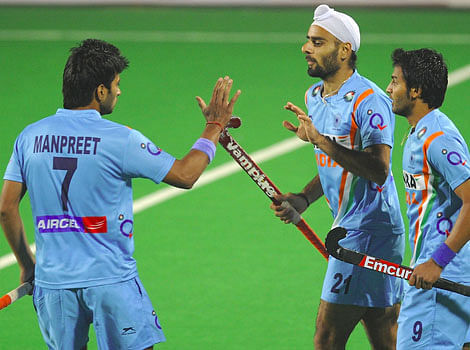
Junior Indian hockey team – traditional problems remain

Traditional problems remain in the junior Indian side.
In my previous article, I had said that all seems lost with the senior India hockey team. I also mentioned that we need to concentrate on the junior team.
With the current coaching team of Gregg Clark and Baljit Saini, we have the makings of a very good coaching staff in place. We have an experienced international coach, combined with a sensible, disciplinarian, pragmatic Indian coach. So without a doubt, a crack team is already in place. The fact that they worked together on the winning Ranchi Rhinos outfit adds even more weight to their credentials.
To that mix, you add high-performance director Oltmans and you have a truly genuine shot at a good result. In addition, the attack and experience part of the equation in the team is already in place. With a sprinkling of the junior team members already playing on the senior national team, the junior India team should start off with a distinct advantage. But there lies the rub.
The problem of the junior team is the same as the seniors – the play of the back six is going to make or break India.
It is critical how the back six are going to marshal the Indian team. Already in place is a goalkeeper who was awarded the best goalkeeper award (amongst all his world peers) in the tournament concluded last year in Malaysia. With the inclusion of players that played in the WSH – the likes of Raminder Singh, Lalit and others – and the current Olympians Akashdeep, Mandeep, there is plenty of potency on the attack side of the equation.
All they need is training in set plays, set formations, and particularly, patience during goal scoring attempts. It is but natural that with such a magnitude of experienced talent, the coaches will come up with the right offensive answers. What is worrisome is the back 6. The style of play of the midfielders playing on the senior India team is representative of what is culturally done on the hockey fields of India. The junior team will have the same issues.
The junior team also has an “a la Sandeep Singh” issue.
Traditionally on the fields of India, the PC experts are generally defenders – strong, big but very slow. Their deficiencies are not corrected because at the school level, they are, because of their tremendous PC expertise, nearly prima donnas. What coach has the guts to sit down his match-winning weapon and berate him about his lack of defensive skills?
In Gurjinder Singh (best player of the WSH tournament) we have a similar player – lethal on his day in PCs, but a slow and poor tackler. As mentioned in basketball, he really is a “project”, to be handled with kid gloves. The coaches are going to have a very difficult decision to make as to which position they play him in. This is going to affect the future of Indian hockey (just like with Sandeep).
A defensive role for this youngster would be potentially disastrous, both for India and for his career. Modern hockey requires mobile, good tackling defenders, with good trapping and good distribution. But quickness and mobility are the keys. He will always lack these attributes, unless “the project”is handled extremely well by his mentor coaches. A stint with a personal coach and a personal trainer would be in his best interest. Otherwise I fear we will have a repetition of the Sandeep saga.
Towards that aim as a future philosophy, it might behoove India to develop the PC battery expertise in the hands of non-defenders. Pau Quemada (Spain) and Ashley Jackson (England) – both great PC experts, both midfielders – come readily to our mind. A memo to all our school coaches with a hint of this would be really beneficial. But that is for the future.
Midfield has an attack mindset.
With many of these players playing alongside Sardar Singh on the senior India team, and with their brief of playing attacking hockey as instructed by their senior coach, it is but natural that they will continue that role. Defensive discipline will have to be enforced.